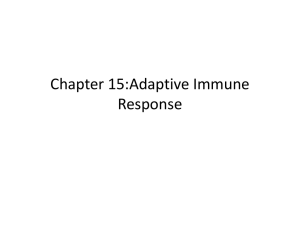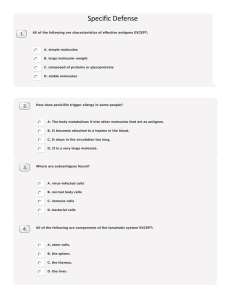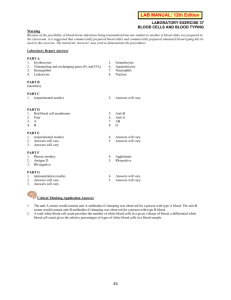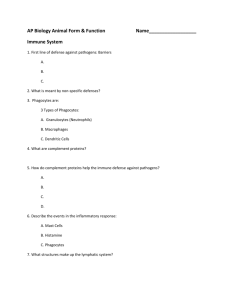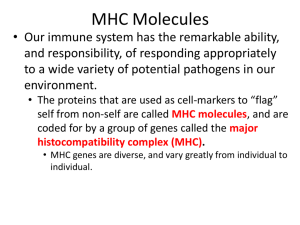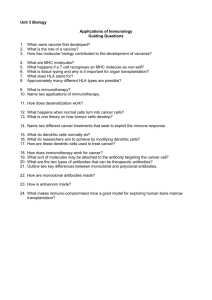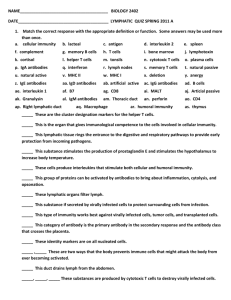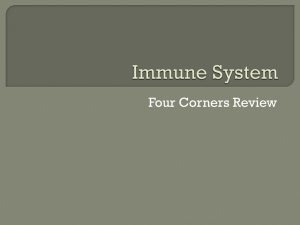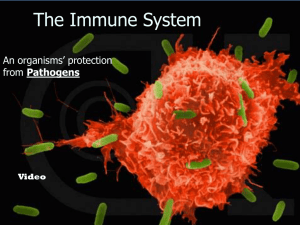Document
advertisement
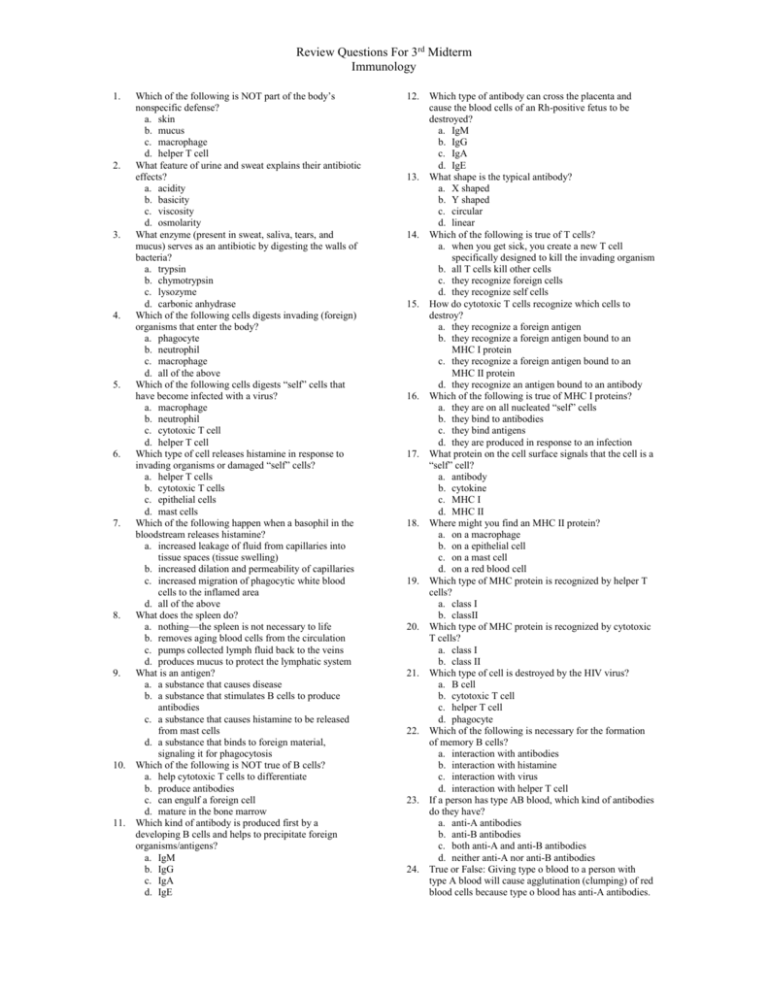
Review Questions For 3rd Midterm Immunology Which of the following is NOT part of the body’s nonspecific defense? a. skin b. mucus c. macrophage d. helper T cell 2. What feature of urine and sweat explains their antibiotic effects? a. acidity b. basicity c. viscosity d. osmolarity 3. What enzyme (present in sweat, saliva, tears, and mucus) serves as an antibiotic by digesting the walls of bacteria? a. trypsin b. chymotrypsin c. lysozyme d. carbonic anhydrase 4. Which of the following cells digests invading (foreign) organisms that enter the body? a. phagocyte b. neutrophil c. macrophage d. all of the above 5. Which of the following cells digests “self” cells that have become infected with a virus? a. macrophage b. neutrophil c. cytotoxic T cell d. helper T cell 6. Which type of cell releases histamine in response to invading organisms or damaged “self” cells? a. helper T cells b. cytotoxic T cells c. epithelial cells d. mast cells 7. Which of the following happen when a basophil in the bloodstream releases histamine? a. increased leakage of fluid from capillaries into tissue spaces (tissue swelling) b. increased dilation and permeability of capillaries c. increased migration of phagocytic white blood cells to the inflamed area d. all of the above 8. What does the spleen do? a. nothing—the spleen is not necessary to life b. removes aging blood cells from the circulation c. pumps collected lymph fluid back to the veins d. produces mucus to protect the lymphatic system 9. What is an antigen? a. a substance that causes disease b. a substance that stimulates B cells to produce antibodies c. a substance that causes histamine to be released from mast cells d. a substance that binds to foreign material, signaling it for phagocytosis 10. Which of the following is NOT true of B cells? a. help cytotoxic T cells to differentiate b. produce antibodies c. can engulf a foreign cell d. mature in the bone marrow 11. Which kind of antibody is produced first by a developing B cells and helps to precipitate foreign organisms/antigens? a. IgM b. IgG c. IgA d. IgE 1. 12. Which type of antibody can cross the placenta and cause the blood cells of an Rh-positive fetus to be destroyed? a. IgM b. IgG c. IgA d. IgE 13. What shape is the typical antibody? a. X shaped b. Y shaped c. circular d. linear 14. Which of the following is true of T cells? a. when you get sick, you create a new T cell specifically designed to kill the invading organism b. all T cells kill other cells c. they recognize foreign cells d. they recognize self cells 15. How do cytotoxic T cells recognize which cells to destroy? a. they recognize a foreign antigen b. they recognize a foreign antigen bound to an MHC I protein c. they recognize a foreign antigen bound to an MHC II protein d. they recognize an antigen bound to an antibody 16. Which of the following is true of MHC I proteins? a. they are on all nucleated “self” cells b. they bind to antibodies c. they bind antigens d. they are produced in response to an infection 17. What protein on the cell surface signals that the cell is a “self” cell? a. antibody b. cytokine c. MHC I d. MHC II 18. Where might you find an MHC II protein? a. on a macrophage b. on a epithelial cell c. on a mast cell d. on a red blood cell 19. Which type of MHC protein is recognized by helper T cells? a. class I b. classII 20. Which type of MHC protein is recognized by cytotoxic T cells? a. class I b. class II 21. Which type of cell is destroyed by the HIV virus? a. B cell b. cytotoxic T cell c. helper T cell d. phagocyte 22. Which of the following is necessary for the formation of memory B cells? a. interaction with antibodies b. interaction with histamine c. interaction with virus d. interaction with helper T cell 23. If a person has type AB blood, which kind of antibodies do they have? a. anti-A antibodies b. anti-B antibodies c. both anti-A and anti-B antibodies d. neither anti-A nor anti-B antibodies 24. True or False: Giving type o blood to a person with type A blood will cause agglutination (clumping) of red blood cells because type o blood has anti-A antibodies.
